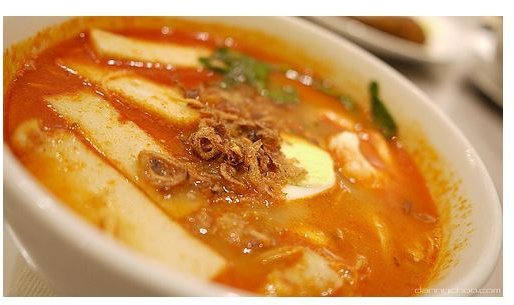Traditional Malaysian Food: A Melting Pot of Cultures
A melting pot of various cultures, Malaysia can boast of varied traditional delicacies–ranging from its hot, spicy dishes to its sweet and tangy desserts. True enough, with each traditional food from the little villages in the country, we can soon identify distinct characteristics for each state.
Variations Based on Location
Due to Malaysia’s size and geography, its traditional food has also taken on its diversity. Each geographical location can now be
characterized by its food’s qualities. For instance, those on the west coast usually have hot and spicy meals. This resulted from the influence of Thailand, which lies near the west coast.
Meanwhile, the central region is famous for its rich gravy as much as the southern region, which is noted for sour, spicy, and thick sauces. Last, areas on the east coast are well known for their sweet dishes made of glutinous rice.
Malay Cooking Practices
Traditional food in Malaysia is best prepared using the country’s local ingredients. Herbs and spices are ground manually, just as the dishes are cooked using a stove or old-fashioned oven. Ingredients are stirred using traditional kitchen utensils, and then served on edible leaves, and eaten with one’s hands, which is considered good Malaysian table manners and etiquette.
Breakfast Fare
Usual breakfast meals you might want to taste when you visit Malaysia would include boiled tapioca with grated coconut, pulut inti (glutinous rice topped with sweet coconut), nasi lemak (rice with coconut milk), as well as sweet and delicious kuih-muih (Malaysian cakes).
Heavy Meals
Examples of traditional heavy dishes in Malaysia include lemang (glutinous rice prepared and cooked using bamboo pole), nasi degang (three-part rice with one-part glutinous rice steamed together with onion, ginger, and fenugreek), and ketupat (glutinous rice prepared and cooked together with coconut, pandanus, or banana leaves).
Beverages
For those who would like to quench their thirst the “Malaysian way,” there’s nothing to worry about–they have tapai, tuak, and nira.
Tapai is a fermented tapioca or glutinous rice made through an old process for fermenting. Meanwhile, the juice from tapai is strengthened to create the alcoholic beverage tuak. From there, rubber plant leaves, banana leaves, or yam leaves are used to wrap either of these drinks.
Nira, on the other hand, comes from the coconut flower’s nectar. This nectar is allowed to drip slowly through short bamboo containers tied around coconut trees’ top. This drink turns out to be very, very sweet. Once cooked slowly, it will become thick palm sugar.
Snacks
Traditional snacks in Malaysia, just like the meals, make use of lots of spices. They also utilize local produce such as sweet potato, sago (tapioca pearl), yam, and others.
Keropok (fish crackers) is cooked using fish, prawns, sago, or other seafood. It is a popular traditional snack in the country. Usually, they are dried prior to frying; however, keropok lekor, which comes from the East Coast, are boiled before they are fried.
Another famous snack to try is lempeng (made of molasses, bananas, and coconut shaving). This is similar with another Malaysian cake made out of finely grated tapioca baked through smoking coconut husks.
Delicacies From Other Populations in Malaysia
Since Malaysia is rich in multinational cuisines, its delicacies also vary with the large ratio of Indians, Chinese, and other indigenous races in this nation.
Indian Delicacies
Indians in Malaysia do have their own distinctive characteristics. Thus, Indian Malaysian dishes can also be classified under the country’s class of dishes.
Oftentimes, such food can be bought in different local stalls together with the tarik (pulled tea). This tea is frothy and thick and it entails passing the milk and tea from a large metal mug to the other using a “pour and pull” motion.
Likewise, same as other Indian dishes around the world, their delicacies turn out hot and spicy, making use of curries, too. Indian Malaysians prefer bread or rice as their staple food, and they do not consume beef.
Chinese Dishes
Around 23 percent of Malaysian cuisine consists of Chinese food. Usually from the south, Chinese dishes can often be found in Hakka and Hainan.
One of the most well known dishes (also less expensive) is the Hainanese Chicken Rice. A favorite, it is comparable to the Swiss fondue, with a boiling stockpot at the middle filled with vegetables, seafood, and meat.
Meanwhile, the Hokkiens do have the Hokkien fried Mee (thick egg noodles with vegetables, meat, seafood, and loaded with soy sauce). If you visit North Malaysia, this is known as prawn soup noodles.
Now, with all these most common traditional Malaysian foods–whether they are Malay, Indian, or Chinese–with all the goodness they have to offer, you would inevitably say “lazat” (delicious)!
References
- Marimari: Food in Malaysian - http://www.marimari.com/content/malaysia/food/main.html
- Image: Malaysian Food by Danny Choo under CC BY 2.0
- Pulao Pangkor: Malaysian Food - http://www.pulau-pangkor.com/Malaysian-food.html
